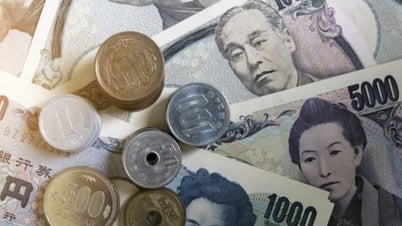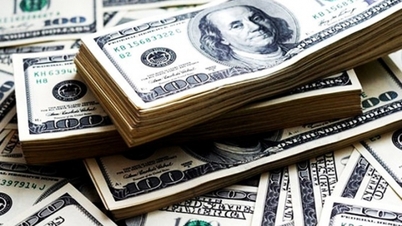 |
| Economic news review |
Overview
In the first quarter of 2025, the real estate market recorded some signs of improvement, however, the recovery was still uneven between regions and segments.
According to the Vietnam Real Estate Market Report for the first quarter of 2025 by the Vietnam Association of Realtors (VARS), supply and liquidity in the real estate market in the first quarter have clearly recovered, especially in some segments, especially compared to the sluggish period in 2023.
Specifically, in the first quarter of 2025, in the primary housing market, the total market supply reached 27,000 products, an increase of 33% over the same period in 2024, of which 14,500 products were newly offered, only about half of the previous quarter but 3 times higher than in the first quarter of 2024, the rest were inventory continuing to be offered. The apartment segment continued to play a leading role, accounting for more than 69% of the structure of newly launched housing supply in the first quarter of 2025, but high-end and luxury apartments still accounted for a large proportion, with the number of new luxury projects tending to increase while affordable commercial apartments were completely absent. The proportion of affordable apartments improved, accounting for nearly 13%, equivalent to nearly 2,000 products, up 33% over the previous quarter and 54% over the same period, thanks to more social housing apartment projects being opened for sale.
The overall absorption rate of the whole market reached 45%, equivalent to 12,273 transactions, equal to 50% of the previous quarter but double the same period last year. The absorption rate of newly opened projects increased, especially in provinces and cities with specific information on planning, infrastructure and new projects such as Hanoi , Ho Chi Minh City, Ha Nam, Hai Phong, Bac Giang, Da Nang, Thanh Hoa, Thai Nguyen... Regarding the distribution between regions, 53% of the supply of residential real estate for sale was contributed by projects in the North, although down 7 percentage points compared to the whole year of 2024, it was still higher than the 35% in the South. The trend of differentiation between enterprises is still large when new projects are mainly implemented by large enterprises, which have advantages in many aspects.
Regarding prices, the real estate offering price level still tends to increase, as cost pressure, especially land-related costs, increases in the context of increasingly scarce land funds. The price index reflects the average selling price fluctuation of the period (current time) compared to the base period (first quarter of 2019) of projects in the sample set selected and observed by VARS. It shows that in the first quarter of 2025, compared to the base period, the average selling price of projects in the sample set increased respectively: Hanoi 77.6%, Da Nang 58.6% and Ho Chi Minh City 35%...
Meanwhile, in the secondary market, prices of some projects recorded a flat trend, reflecting the adjustment after the hot period in 2024. Another notable development in the first quarter was that the market was still affected by planning and investment information. Accordingly, information about the merger of provinces and cities, combined with the announcement of new land price lists by many localities, many times higher than the current price list and the FOMO (fear of missing out) psychology of real estate investors, caused land prices to spike again.
In another segment, the industrial park real estate market continues to play a leading role with strong supply growth and demand still on an upward trend. In the first quarter of 2025, the country has 15 more industrial park infrastructure investment projects adjusted/approved by the Government with an area of 4,930 hectares, nearly 3 times higher than the first quarter of 2024 and equal to 54% of the whole year 2024. The tourism and resort real estate market continues to recover slowly but surely. The supply of tourism and resort real estate continues to improve.
The entire market recorded 950 new products for sale, 2.4 times higher than the previous quarter and nearly 3 times higher than the same period in 2024, although it was only 18% of the same period in 2022. Newly opened projects were absorbed relatively well, with an absorption rate of 51%, equivalent to more than 400 transactions. The commercial real estate market for offices and retail also recorded stable growth thanks to increased supply and demand along with economic growth.
According to experts, there are 5 variables affecting the real estate market in the remaining months of 2025. First, the US government plans to impose high reciprocal taxes on trading partners. Vietnam is expected to be taxed at a rate of 46%, with a 90-day waiting period starting from April 9. The market is in a passive state, waiting for the final negotiation results. The government's management policies will be comprehensively reviewed, possibly changing some strategic goals and plans set at the beginning of the year. With costs increasing, real estate investors can adjust their investment portfolios, or continue to observe instead of buying quickly and selling quickly.
Second, the planning, merging of provinces and cities, and streamlining of the apparatus are expected to help shorten administrative procedures and processes. However, it is predicted that there will be delays and backlogs of documents in the initial period. The institutional corridor and basic regulations are expected to have changes and adjustments accordingly.
Third, the State's new regulations tighten real estate ownership and leasing; the State will strengthen market control to avoid causing land fever.
Fourth, the geopolitical situation is still complicated and risky, which can affect the macro economy in general.
In conclusion, most experts believe that 2025 will witness a sharp increase in real estate supply, thanks to support policies from the Government and recovery efforts of real estate businesses after a difficult period.
On the demand side, economic growth, along with infrastructure investment policies and support from the Government, are forecast to stimulate home buying demand this year. On the price side, real estate prices in 2025 will be adjusted appropriately after a year of strong growth in 2024, but the possibility of a deep decline is very unlikely due to pressure from land prices and high input costs.
Domestic market summary week from April 14-18
In the foreign exchange market from April 14 to 18, the central exchange rate was generally adjusted upward by the State Bank, except for a slight decrease in the middle of the week. At the end of April 18, the central exchange rate was listed at 24,898 VND/USD, down 25 VND compared to the previous weekend session.
The State Bank of Vietnam listed the USD buying rate at 23,704 VND/USD, 50 VND higher than the floor rate; while the USD selling rate was listed at 26,092 VND/USD, 50 VND lower than the ceiling rate.
The interbank USD-VND exchange rate in the week of April 14-18 decreased slightly then increased sharply at the end of the week. At the end of the session on April 18, the interbank exchange rate closed at 25,950, up 165 VND compared to the previous weekend session.
The USD-VND exchange rate on the free market last week also fluctuated with a downward trend at the beginning of the week and increased again at the end of the week. At the close of the session on April 18, the free exchange rate increased by 195 VND in both buying and selling directions compared to the previous weekend session, trading at 26,285 VND/USD and 26,385 VND/USD.
In the interbank money market from April 14 to 18, interbank VND interest rates for terms of 1 month or less increased sharply in the first session of the week and then decreased again. Closing on April 18, interbank VND interest rates were traded at: overnight 4.08% (+0.02 percentage points); 1 week 4.33% (+0.03 percentage points); 2 weeks 4.50% (+0.10 percentage points); 1 month 4.63% (+0.07 percentage points).
Interbank USD interest rates fluctuated slightly across all terms last week. On April 18, interbank USD interest rates were: overnight 4.30% (-0.02 percentage points); 1 week 4.36% (-0.03 percentage points); 2 weeks 4.44% (unchanged) and 1 month 4.50% (+0.01 percentage points).
In the open market from April 14-18, in the mortgage channel, the State Bank of Vietnam offered VND140,000 billion for 5 terms of 7 days, 14 days, 21 days, 35 days and 91 days, with interest rates kept at 4.0%. There were VND63,678.83 billion in winning bids; VND72,035.40 billion maturing last week in the mortgage channel. The State Bank of Vietnam did not offer SBV bills. There was no volume of bills maturing last week.
Thus, the State Bank has withdrawn a net VND8,356.57 billion from the market last week through the open market channel. There are VND110,510 billion circulating on the mortgage channel, there are no more State Bank bills circulating on the market.
On April 16, the State Treasury successfully bid for VND11,575 billion/VND14,000 billion of government bonds called for bid (winning rate reached 83%). Of which, the 5-year and 15-year terms mobilized the entire bid volume, respectively VND3,000 billion and VND500 billion. The 10-year term mobilized VND8,060 billion/VND10,000 billion called for bid and the 30-year term mobilized VND15 billion/VND500 billion called for bid. The winning interest rate for the 5-year term was 2.20% (+0.05 percentage points compared to the previous auction), the 10-year term was 3.0% (unchanged), the 15-year term was 3.09% (+0.01 percentage points) and the 30-year term was 3.28% (unchanged).
On April 23, the State Treasury plans to bid for VND12,500 billion in government bonds, of which VND2,000 billion will be offered for 5-year terms, VND9,000 billion for 10-year terms, VND1,000 billion for 15-year terms, and VND500 billion for 30-year terms.
The average value of Outright and Repos transactions in the secondary market last week reached VND12,995 billion/session, slightly down from VND13,565 billion/session the previous week. Government bond yields last week fluctuated slightly in the 5-year and 15-year terms. At the close of the session on April 18, government bond yields were trading around 1-year 2.08% (unchanged compared to the session at the end of last week); 2-year 2.11% (unchanged); 3-year 2.17% (unchanged); 5-year 2.39% (+0.02 percentage points); 7-year 2.73% (+0.002 percentage points); 10-year 3.04% (-0.001 percentage points); 15-year 3.20% (+0.003); 30-year 3.43% (unchanged).
The stock market from April 14-18 fell sharply in the first 3 sessions of the week and then reversed and increased sharply in the last 2 sessions of the week due to the impact of the US tariff policy. At the end of the session on April 18, VN-Index stood at 1,222.46 points, up 11.79 points (+0.97%) compared to the previous weekend; HNX-Index fell 7.61 points (-1.67%) to 213.34 points; UPCoMp-Index jumped 2.67 points (+2.33%) to 93.25 points.
Average market liquidity reached over VND26,100 billion/session, down slightly from VND28,757 billion/session the previous week. Foreign investors continued to net sell more than VND1,770 billion on all three exchanges.
International News
Fed Chairman Jerome Powell made some notable comments about the US economy last week. On April 17, Vietnam time, at an economic forum, Chairman Powell affirmed that price stability is a prerequisite for maintaining a sustainable labor market. Therefore, the Fed will continue to keep interest rates unchanged in the coming time to further monitor the impacts of trade policy and economic developments, especially in the context of President Donald Trump's constantly changing tariff policy.
Previously, in February 2025, inflation according to the Fed's preferred measure reached 2.5% and is expected to decline slightly to 2.3% in March, but still above the 2% target; while the labor market remains strong with the unemployment rate at 4.2% and the number of jobs increased more than expected.
Mr. Powell noted that if economic growth slows while inflation remains stubbornly high, the Fed could find itself in a difficult position of balancing its price control and employment goals. Therefore, the Fed will act cautiously to avoid price shocks caused by tariffs turning into persistent inflation while ensuring that long-term price expectations remain stable.
The United States also received some important economic indicators last week. First, the US Census Bureau said that total retail sales and core retail sales in the US increased by 1.4% and 0.5% respectively compared to the previous month in March, following the 0.2% and 0.7% increases in the previous month, and both were more positive than the forecast of 1.3% and 0.4% increases. Compared to the same period in 2024, total retail sales increased by 4.73% in March, higher than the 3.5% increase in February.
Next, in the construction sector, the number of new housing permits in the US reached 1.48 million in March, up slightly from 1.46 million in February and at the same time higher than the forecast of 1.45 million. However, the number of housing starts in March was only 1.32 million, down significantly from 1.49 million in the previous month, also lower than the forecast of 1.42 million.
Next, on the labor market, the number of initial unemployment claims in the US in the week ending April 11 was 215 thousand, down from 224 thousand the previous week, contrary to the forecast of a slight increase to 225 thousand. The average number of claims in the most recent 4 weeks was 220.8 thousand, down slightly by 2.5 thousand compared to the previous 4 weeks.
The European Central Bank (ECB) continued to cut its policy interest rate. At its meeting on April 17, the ECB said the inflation outlook was on track as expected. In addition, the regional economic outlook was deteriorating due to escalating trade tensions. ECB President Christine Lagarde warned that a decline in trade could lead to a decline in investment and consumption. The ECB is steadfast in its goal of achieving inflation at 2.0% over the medium term, especially in the current volatile market conditions.
At this meeting, the ECB decided to lower its policy rates by 25 basis points. Accordingly, the refinancing rate, marginal lending rate and deposit rate at the ECB will be reduced to 2.25%; 2.40% and 2.65%, respectively. The ECB will continue to rely on data from each meeting to determine the appropriate monetary policy stance.
Regarding the Eurozone economy, the headline CPI and core CPI inflation indicators in the region officially stood at 2.2% and 2.4% year-on-year in March, unchanged from the preliminary data.
Next, in Germany, the ZEW survey organization said the economic confidence index in this country was -14.0 points in April, falling sharply from 51.6 points the previous month, and much lower than the forecast of 10.6 points.
Source: https://thoibaonganhang.vn/diem-lai-thong-tin-kinh-te-tuan-tu-14-184-163088.html


![[Photo] Many young people patiently lined up under the hot sun to receive a special supplement from Nhan Dan Newspaper.](https://vphoto.vietnam.vn/thumb/1200x675/vietnam/resource/IMAGE/2025/5/18/6f19d322f9364f0ebb6fbfe9377842d3)
![[Photo] Party and State leaders attend the special art program "You are Ho Chi Minh"](https://vphoto.vietnam.vn/thumb/1200x675/vietnam/resource/IMAGE/2025/5/18/6895913f94fd4c51aa4564ab14c3f250)


![[Photo] Ready for the top competitions of Vietnamese table tennis](https://vphoto.vietnam.vn/thumb/1200x675/vietnam/resource/IMAGE/2025/5/18/9c547c497c5a4ade8f98c8e7d44f5a41)





















































































Comment (0)